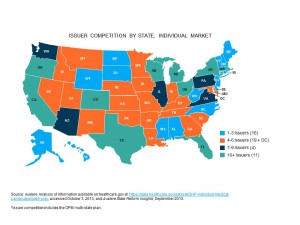It falls to me to author this Shutdown edition of Health Wonk Review.
I’m truly honored to be in this position; the posts below bring a depth of understanding, a diversity of opinion, and a wealth of experience/expertise to this discussion that is sorely needed.
The shutdown’s cause – PPACA
David Williams ledes off (intentional pun alert) with a brief on why some in Congress hate/despise PPACA. David makes telling points; this is a must-read.
An excellent counterpoint comes from Jaan Sidorov, who attributes outrage over PPACA to a general distaste for government and government expansion.
I take Jaan’s point, but I’d point out that many of those most outraged are also on Medicare and enjoying the handout that is Part D...and the economic impact of the shutdown and long-term impact on the government workforce – makes the stand of a relatively few Congresspeople even more puzzling/troubling/short-sighted.
A welcome perspective comes from health insurance.org; where Louise Norris reminds us that We are all in this together; sure, her family’s insurance costs are going up, but “We support [reform] because something like this isn’t supposed to be all about us. In the case of healthcare reform, our higher premiums will help ensure that our friends and neighbors and fellow citizens have access to affordable health insurance.” Thanks for the reminder, Louise! (btw Louise is a broker for small employers; she brings a feet-on-the-street perspective that we wonkers often lack.)
So, what would have happened if the Dems had agreed to delay implementation of PPACA for a year? Nothing good, says Health Insurance Colorado; an actuarial disaster, adverse selection on steroids, administrative nightmare. Other than that…
Impact
With all the confusion about the government shutdown, many seniors are concerned that their healthcare and prescriptions will be halted. Chuck Smith of Innovative Health Media says this simply isn’t the case. Although annoying, seniors with Medicare can continue to get the same coverage as they did prior to the shutdown.
Can we trust officials and legislators to put patients’ care and the health of the population first when they are looking over their shoulder at those who might provide them lucrative employment opportunities in the private sector? Neither the opponents or proponents of this reform legislation seem concerned about the potential for corruption provided by the “revolving door.” Fortunately, Roy Poses is. And the consequences have been, and will be, incredibly damaging if we don’t address the “door”.
Some of the lesser-known-but-deadly-serious effects are outlined at Workers’ Comp Insider, where Julie Ferguson delivers a roundup of information about the impact that the government shutdown is having on workplace health & safety and various regulatory and employment–related matters. It’s the second — and with any luck the last — in her series of roundups on how the shutdown is affecting employers and employees alike. Here’s a quick list…
- Mine safety inspections – required by law to happen 4 times a year for deep mines – are on hold. Think Upper Big Branch, Sago, Aracoma.
- Other workplace safety inspections are halted
- NIH research is on hold, and some projects are going to be severely affected.
Of course, the outrage over PPACA was the trigger for the whole shutdown idiocy, which leads to our next section;
How ’bout them Exchanges?
Glad you asked! Writing on the eve of open enrollment, Dan Schuyler, former Technology Chief at the Utah Exchange, now at Leavitt Partners predicts a rocky start for the exchanges (spot on with that one), explains why, and discusses what metrics to look to, and over what time frames, to determine how well the exchanges are working . Head to Health Affairs, and read Will Health Insurance Exchanges Work to find out if Dan thinks they will…
More insight into/advice on
shopping on the Exchanges comes from Wendell Potter; Potter hits the highlights in his brief, easy-to-read piece.
Another perspective comes from the always delightful Hank Stern; Chad Henderson is, apparently, the only American who’s
successfully navigated the Exchange (but still paid too much). InsureBlog’s Bob Vineyard has the details. (ed. note – Hank and I could not be further apart politically, but seem able to disagree amiably…)
More great posts…
Thanks to Jason Shafrin for his contribution, wherein he unpacks the recent report that overweight folks live longer.
Continuing on the other weighty matters front, Maribeth Shannon of CHCF and Jen Joynt, an independent health care consultant, have a piece in Health Affairs blog entitled No Method To The Madness: The Divergence Between Hospital Billed Charges And Payments, And What To Do About It in which the authors offer an interesting history of why charges mattered initially and how they became divorced from payments, the remaining incentives for charges to remain high. For those paying bills at a discount below charges, scary stuff indeed (I’m talking to you, work comp!)
Population health matters a lot – if you aren’t up to speed, read this piece on electronic health records and their interaction with population health. Thanks to Healthcare Talent Transformation’s Peggy Salvatore for the contribution.
That’s it for this edition; thanks to the contributors and see you in a fortnight – when hopefully sanity will have prevailed.
If not, it will be the default edition…

